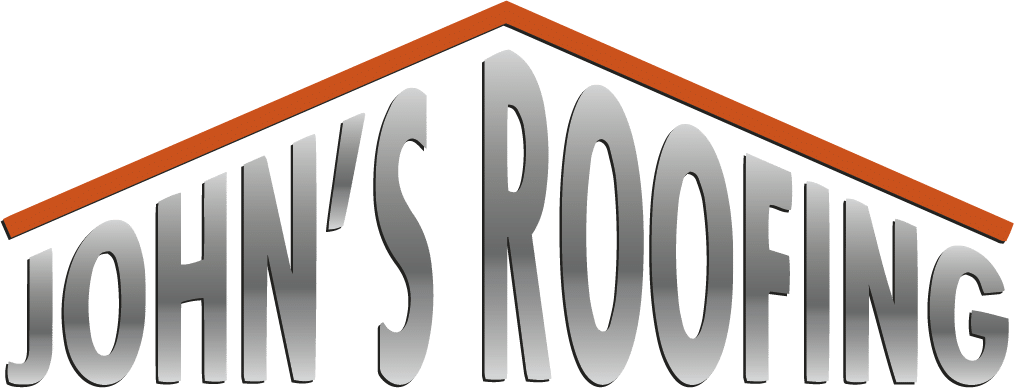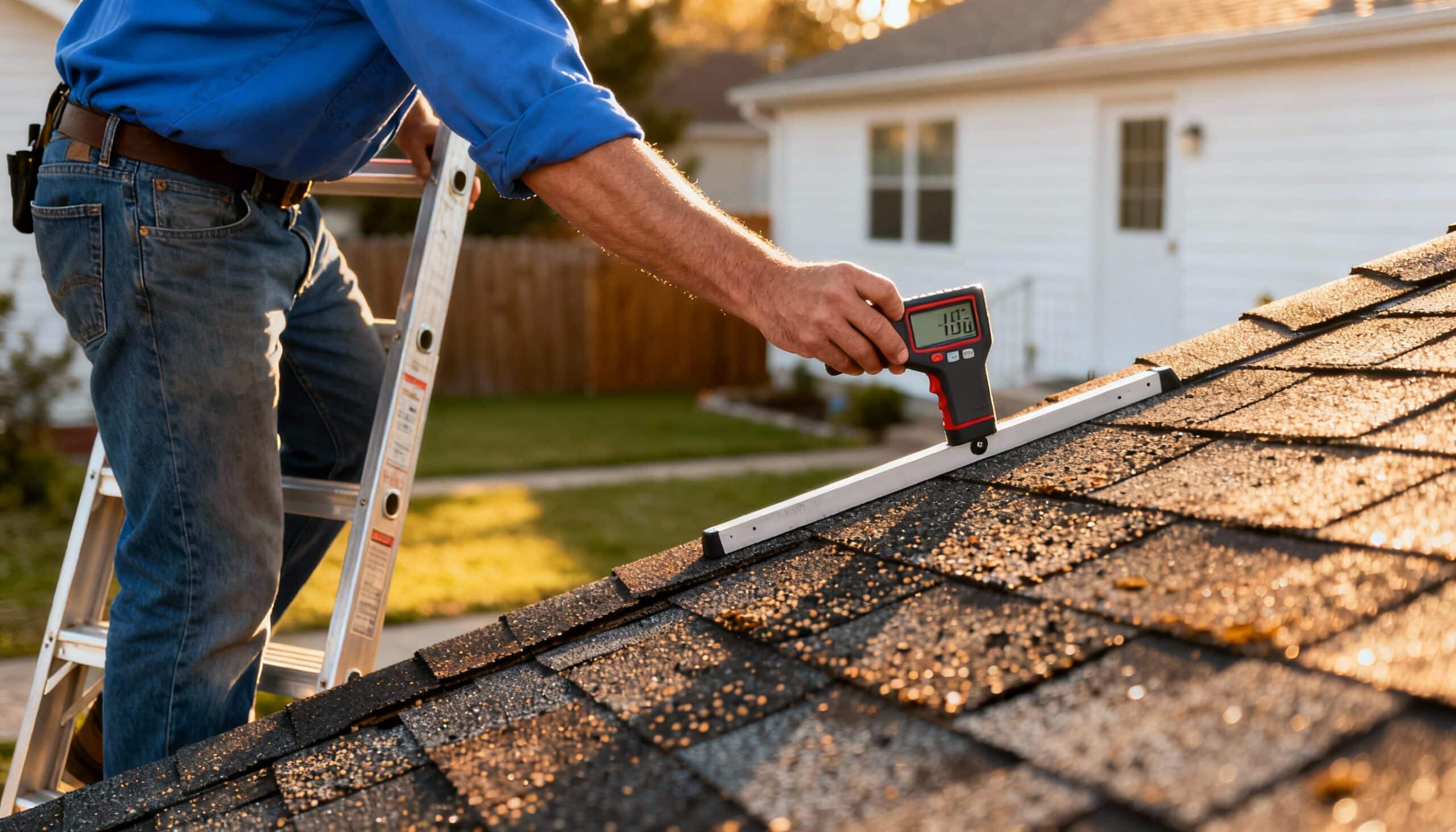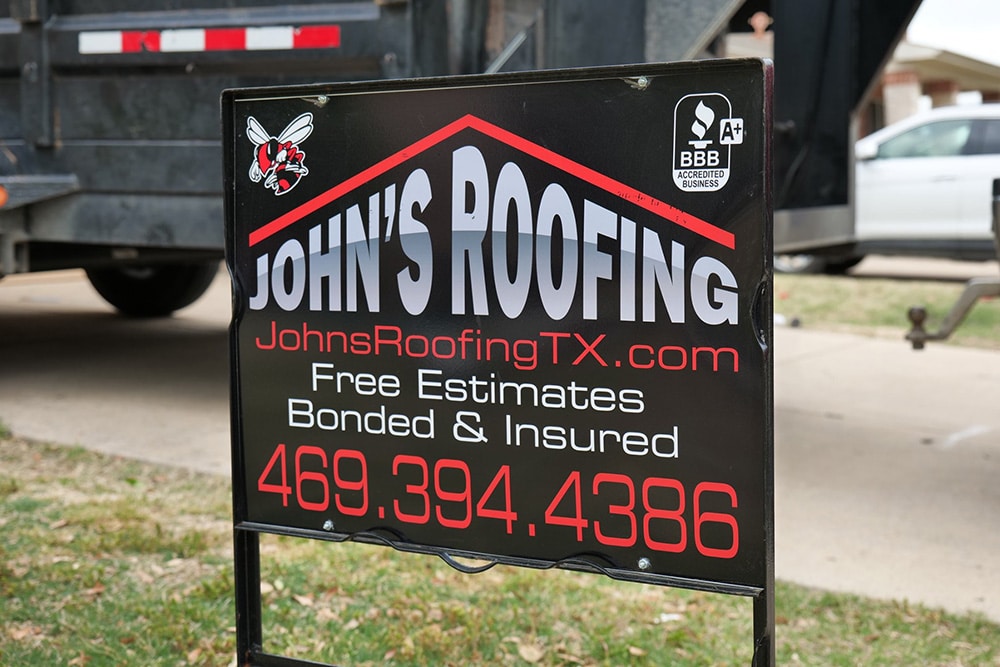A sudden downpour in Dallas is a familiar sound, but the drip, drip, drip inside your home is not. A roof leak during a storm is a stressful discovery that can make any homeowner feel helpless. While your first instinct might be to panic, taking immediate and calm action can significantly reduce the damage to your home and belongings.
This guide will walk you through the essential steps to manage an active roof leak during a storm. We’ll cover how to contain the water, what safety measures to take, and when it’s time to call in the professionals for an emergency roof leak repair in Dallas.
First Steps: Minimize Interior Damage
When water is entering your home, your immediate priority is to control it and protect your property. The storm outside might be raging, but you can take control of the situation inside.
Contain the Water
The moment you spot a leak, grab a bucket, trash can, or any large waterproof container. Place it directly under the drip to catch the water. If the water is splashing, you can place an old towel or a t-shirt at the bottom of the bucket to absorb the impact and muffle the sound.
For leaks coming through a ceiling, you might notice a bulge or discoloration. This is a sign that water is pooling in your attic or between floors. Be very careful, as this bulge could burst. To relieve the pressure safely, place a bucket underneath and use a screwdriver or a small, sharp object to poke a small hole in the center of the bubble. This allows the water to drain in a controlled stream, preventing a ceiling collapse.
Move Your Valuables
Water can quickly ruin furniture, electronics, and personal items. After setting up your bucket brigade, move everything you can out of the affected area. This includes furniture, rugs, electronics, and any sentimental items. If a piece of furniture is too heavy to move, cover it with a thick plastic tarp or sheeting. Make sure the plastic drapes over the sides to direct water away from the furniture.
Soak Up Spilled Water
Even with a bucket in place, water can splash and spread across your floor. Use old towels, blankets, or a mop to soak up any water on the floor. Keeping the area as dry as possible helps prevent slips and falls. It also minimizes the risk of water seeping into your subfloor, which can lead to more extensive and costly damage later.
Safety First: Protecting Your Family
Managing a leak is important, but your family’s safety is the top priority. Water and electricity are a dangerous combination, and a compromised roof structure presents its own hazards.
Be Cautious of Electrical Hazards
If the leak is near light fixtures, electrical outlets, or your circuit breaker box, exercise extreme caution. Water can travel along electrical wiring and create a serious risk of shock or fire.
Turn off the electricity to the affected area from your home’s breaker panel. If you are unsure which breaker controls that specific room, it is safest to shut off the main power supply. Do not touch or unplug any electrical appliances that are wet or standing in water.
Avoid Going into the Attic
While you might be tempted to head into the attic to find the source of the leak, this can be extremely dangerous during a storm. Wet roof trusses and insulation can be slippery, and a misstep could cause you to fall through the ceiling. Additionally, the attic’s low visibility and cramped space increase your risk of injury. It’s best to wait for a professional to assess the situation once the storm has passed.
Stay Off the Roof
Never, under any circumstances, attempt to climb onto your roof during a storm. High winds, heavy rain, and lightning make this incredibly hazardous. Roof surfaces become slick when wet, and the risk of a serious fall is high. No temporary fix is worth risking your life. Leave all roof-related work to trained and properly equipped professionals.
Can You Make a Temporary Fix?
While you should never get on your roof during a storm, you may be able to perform a temporary fix from inside your attic if it is safe to do so. If the storm has subsided but rain is still expected, and you can safely access your attic, you might be able to temporarily slow the leak.
Locate the source of the water entry point. This can be tricky, as water can run along rafters before it drips down. Look for wet insulation, water stains on the underside of the roof deck, or visible light coming through a hole.
Once you find the general area, you can use roofing cement or a thick piece of plywood and a tarp to create a temporary patch from the inside. Place the tarp on the floor to catch the water and use the plywood to help direct the flow into a bucket. This is not a permanent solution, but it can help manage the leak until a professional roofer can perform a proper repair.
When to Call a Professional Dallas Roofer
As soon as you have contained the immediate threat inside your home, your next step is to call a professional roofing contractor. Many Dallas-area roofers offer 24/7 emergency services precisely for situations like this.
Why You Need to Act Fast
Calling a professional quickly is crucial for several reasons:
- Prevent Further Damage: A small leak can quickly escalate, leading to significant structural damage, mold growth, and costly repairs.
- Insurance Claims: Most insurance policies require you to take reasonable steps to mitigate damage. Documenting the leak with photos and calling a professional promptly demonstrates that you acted responsibly. A roofer can also provide a professional assessment to support your claim.
- Expert Assessment: A professional can safely identify the source of the leak and determine the extent of the damage. They have the training and equipment to perform repairs correctly and ensure your home is protected from future storms.
When you call, be ready to provide your address, describe the location and severity of the leak, and answer any questions they have. They will likely dispatch a team to assess the situation as soon as it is safe to do so.
Conclusion: Your Next Steps
Discovering a roof leak during a Dallas storm is unsettling, but you have the power to manage the situation effectively. By following these steps, you can protect your home and family until professional help arrives.
Remember to:
- Contain the leak with buckets and relieve pressure on ceiling bulges safely.
- Move or cover your furniture and valuables.
- Prioritize safety by turning off electricity near the leak and staying off the roof.
- Document everything with photos and videos for your insurance claim.
- Call a trusted Dallas roofing professional for emergency service.
Acting quickly will save you stress, time, and money in the long run. Don’t wait for the storm to pass completely—make the call to secure your home and get the peace of mind you deserve.














